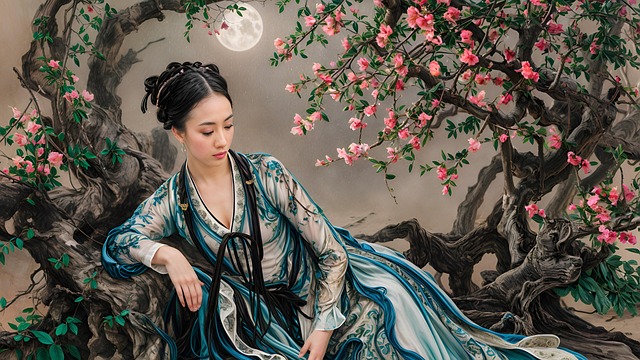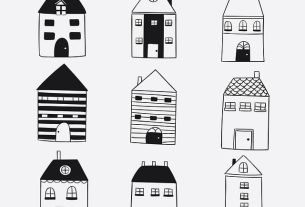Traditional Chinese houses embody exquisite craftsmanship, rich history, and a harmonious blend of aesthetics and functionality. Dating back centuries, these structures feature stunning wooden architecture, natural element incorporation, and balanced symmetry, creating tranquil spaces that reflect China's architectural legacy. Modern reinterpretations preserve this heritage while appealing to contemporary tastes, showcasing the enduring appeal and adaptability of traditional Chinese design worldwide.
Discover the enchanting world of Traditional Chinese Houses, where rich history and timeless aesthetics converge. In this article, we embark on a journey to explore the distinctive architecture and design elements that have captivated locals and visitors alike for centuries. From intricate carvings to harmonious layouts, Traditional Chinese Houses stand as a testament to craftsmanship and cultural heritage. We’ll delve into the key characteristics, proven designs, and success metrics that make these structures trusted landmarks, ensuring a deep understanding of this remarkable architectural tradition.
- Discovering Superior Traditional Chinese Houses
- Explore Trusted Architecture: Traditional Chinese Houses
- Unveiling Effective Traditional Chinese House Designs
Discovering Superior Traditional Chinese Houses

Traditional Chinese houses are renowned for their harmonious blend of aesthetics and functionality, reflecting centuries of cultural evolution. These architectural marvels not only serve as shelters but also as expressions of family heritage and social status. One of the most striking features is the use of wooden structures and intricate carvings, showcasing the craftsmanship of skilled artisans. The design often incorporates natural elements, with balanced proportions and symmetry, creating a sense of tranquility and serenity.
One excellent example of superior Traditional Chinese architecture is the ancient housing complex in Beijing’s Hutong district. These intimate alleys are filled with beautifully preserved courtyards and homes, many dating back to the Ming Dynasty. The structures typically feature high ceilings, elegant pillars, and intricate latticework windows, allowing natural light to flood in while providing privacy. This unique urban landscape has attracted global attention and sparked interest in preserving China’s rich architectural heritage.
Explore Trusted Architecture: Traditional Chinese Houses

Traditional Chinese houses are renowned for their exquisite craftsmanship, rich cultural heritage, and seamless blend of functionality with aesthetics. These architectural marvels are not just structures but reflections of the country’s history, traditions, and philosophical principles. From grand imperial palaces to quaint rural homes, each design element tells a story, showcasing the unique characteristics that have defined Chinese living spaces for centuries.
One of the most striking features of Traditional Chinese Houses is their orientation and layout. Many are designed with specific feng shui principles in mind, ensuring harmony with nature and the surrounding environment. The use of natural materials like wood, stone, and bamboo, along with intricate carvings and decorative elements, contributes to their timeless beauty. Examples such as the ancient houses in Beijing’s hutong alleys or the picturesque rural villages in Yunnan province exemplify the excellence and diversity within Chinese architecture, making these Traditional Chinese Houses a testament to the nation’s architectural prowess and cultural richness.
Unveiling Effective Traditional Chinese House Designs

Unveiling the secrets of traditional Chinese house designs is a journey into a rich cultural heritage and architectural excellence. These timeless structures not only reflect the history and values of China but also showcase an innovative approach to space, functionality, and aesthetics. One of the key characteristics of Traditional Chinese Houses is their harmonious blend with nature. Architects often incorporate natural materials like wood, stone, and tile, creating a connection between the indoors and outdoors. For instance, the iconic Chinese garden, with its meticulously designed rockeries, ponds, and plants, extends the living space, fostering a serene and balanced atmosphere.
The design philosophy emphasizes balance, symmetry, and proportion. Traditional Chinese Houses typically feature rectangular layouts, with a focus on creating a sense of calm and order. Sliding doors and screens, known as shouji, allow for versatile space planning, enabling residents to adapt their homes to different needs and seasons. A renowned example is the ancient city of Suzhou, where classic gardens and elegant houses showcase these principles. The success of traditional Chinese architecture lies in its adaptability, as seen in modern interpretations that blend historical elements with contemporary design, ensuring both cultural continuity and aesthetic appeal.
Traditional Chinese houses, with their rich history and unique architectural principles, offer a fascinating blend of functionality and aesthetics. By exploring the trusted designs and uncovering effective elements, we can appreciate the artistry and craftsmanship that go into these structures. Whether it’s the symmetry, natural materials, or harmonious integration with the environment, Traditional Chinese Houses continue to inspire and captivate, ensuring their place as a global architectural treasure. Trust in the expertise and traditions behind these homes guarantees exceptional results for anyone seeking a piece of this cultural heritage.



